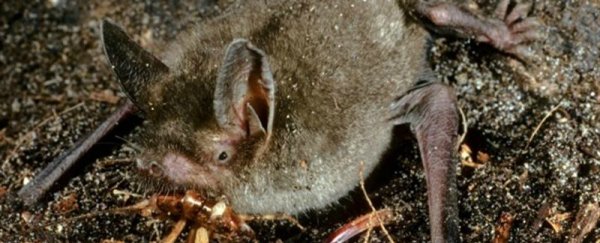Researchers from the University of New South Wales (UNSW) in Australia have found evidence that an ancient bat species lived in New Zealand 16 million years ago walked around on all fours. And its relatives are still alive today.
The new bat species, which has been named Mystacina miocenalis, was three times larger than the average bat today. Its remains were found near Central Otago on the South Island, near what was once a prehistoric lake in a subtropical rainforest between 16 and 19 million years ago.
Describing the new species in PLOS One, the team shows that the Mystacina of bats have been living in New Zealand for a lot longer than was previously thought. Prior to this new discovery, the oldest bat fossil found in New Zealand was 17,500 years old.
"Our discovery shows for the first time that Mystacina bats have been present in New Zealand for upwards of 16 million years, residing in habitats with very similar plant life and food sources," lead researcher Suzanne Hand from UNSW said in a press release.
New Zealand only has three native terrestrial mammals, all of which are bats. Two of these species belong to the Mystacina genus - which are also known to burrow on the ground and 'walk' with their wings tightly furled on their wrists and feet, as well as fly - but one hasn't been sighted since the 1960s. The new research could provide important insight into how to help protect the remaining species.
"Bats are important pollinators and seed dispersers that keep forests healthy. Understanding the connectivity between the bat faunas of different landmasses is important for evaluating biosecurity threats and conservation priorities for fragile island ecosystems," said Hand. "This helps us understand the capacity of bats to establish populations on islands and the climatic conditions required for this to happen."
Teeth fossils indicate that the ancient bat had a similar diet to today's modern bats, eating nectar, pollen and fruit, as well as insects and spiders. The remains also suggest that the animals walked in the same way. But its weight of around 40 grams - three times heavier than its modern counterparts - suggests that the bat hunted more on the ground than in the air.
"The size of bats is physically constrained by the demands of flight and echolocation, as you need to be small, quick and accurate to chase insects in the dark," explained Hand. "The unusually large size of this bat suggests it was doing less in-flight hunting and was taking heavier prey from the ground, and larger fruit than even its living cousin."
Love science? Find out more about the world-leading research happening at UNSW Science.
